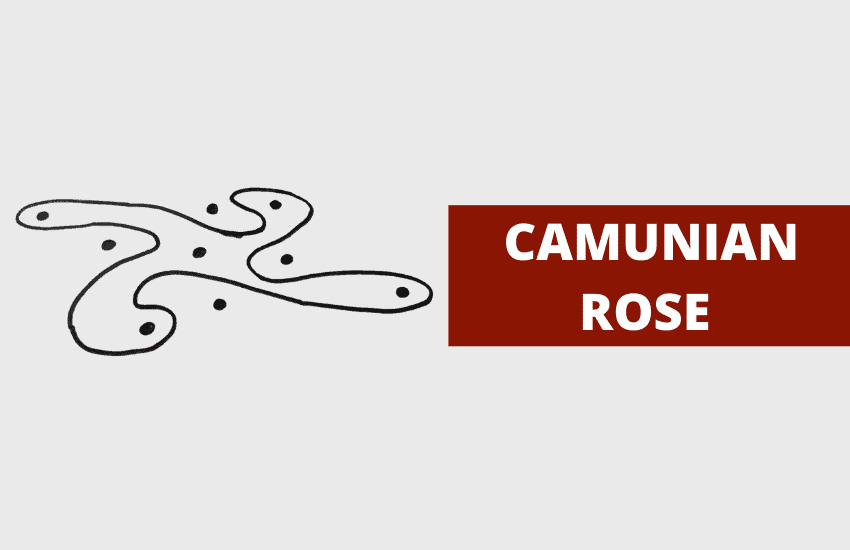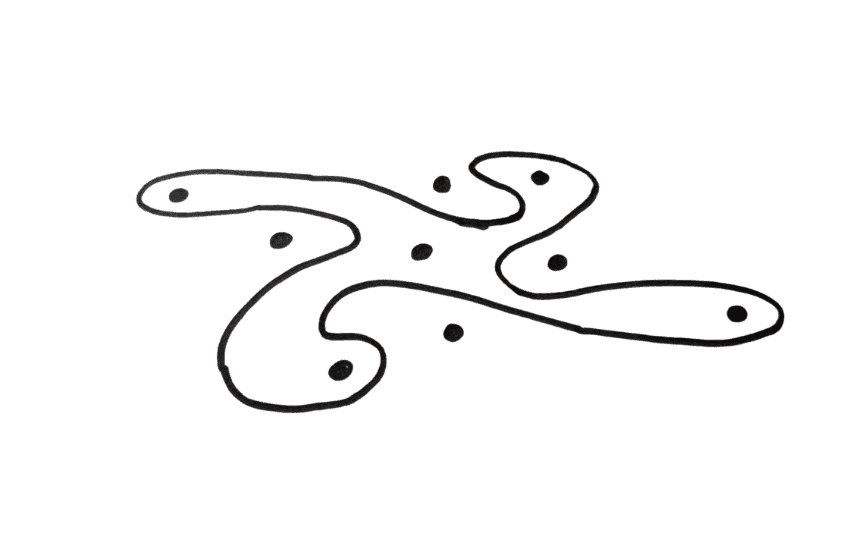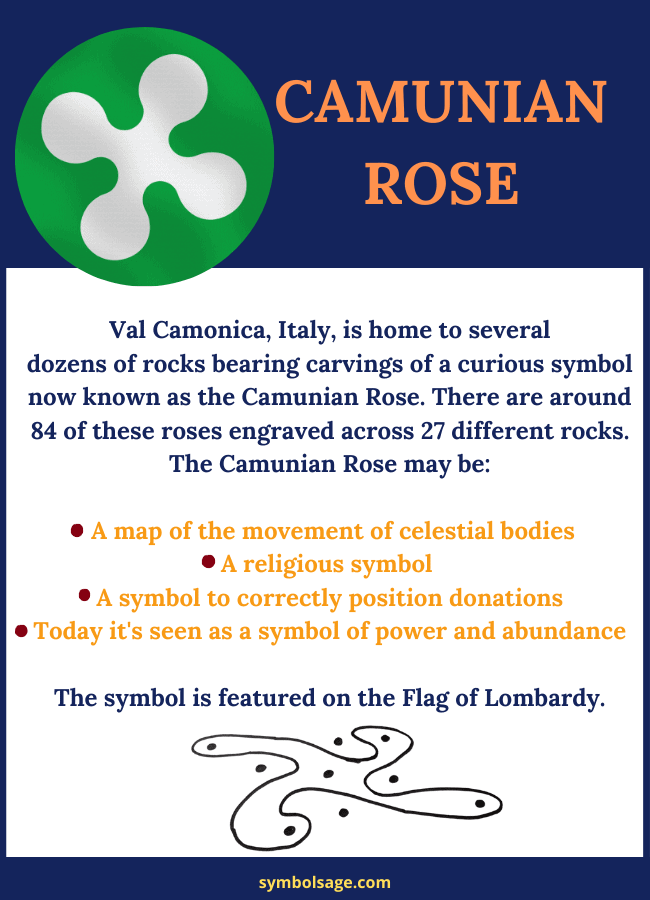
Table of Contents
Val Camonica, one of the largest valleys of the central Alps that runs across Brescia, Italy, is home to several dozens of rocks that bear the carving of a curious symbol now known as the Camunian Rose.
What is the Camunian Rose?
The Camunian Rose features a closed line drawn around nine cup marks to form an image that closely resembles a flower or a swastika – depending on how symmetrical or asymmetrical it was rendered. It’s believed that the symbol was given the name ‘rosa camuna’ instead of ‘Italian swastika’ because of the negative connotation of the swastika symbol especially in Europe.
Scholar Paola Farina took it upon herself to keep a register of all camunian roses in Val Camonica. By the end of her academic journey, Farina was able to count 84 of these roses engraved across 27 different rocks.

She also found that the camunian rose takes on three different versions:
- Swastika: the cup marks form a 5×5 cross and the closed shape creates four arms that bend in almost right angles, with every arm encircling one of the outermost cup marks of the ‘cross.’
- Semi-swastika: the cup marks are drawn in the same manner as the swastika type, only this time only two of the rose’s arms are bent in 90° angles, while the others are connected to form a single long arm
- Symmetric rose: the most common version of the rosa camuna, which features the 9 cup marks in three equidistant columns, as the contours wrap across them to form four symmetrical arms. It appears 56 times on the rocks of Val Camonica and is the version that most resembles the flower it was named after.
Various Interpretations
Many people have tried to decode why the ancients drew this specific symbol or what practical use they may have had for it, but in reality ancient records left very little clue as to the use and meaning of the amunian rose.
- Solar Meaning – Farina posits that the ‘roses’ may have had a solar meaning. It could be an early attempt to map out the movement of celestial bodies throughout the changing of days and seasons.
- Religious Symbol – Decorated archaeologist Emmanuel Anati believes it could have been a religious symbol that called on astral forces to bless and fertilize the soil, from which the Camuni derived food and other forms of sustenance.
- Positioning Offerings – Sacral cults may have used the symbol to correctly position their offerings to Mother Goddess and other deities. It is likely that the cup marks as well as the ‘arms’ were demarcated for the purpose of offering donations to gods and mythical creatures, just like the horned god Cernunnos, who in the Western culture symbolized hunting and fertility of the soil.
- Modern Meaning – In any case, the camunian rose has developed into a symbol of positive power and abundance for those who draw it. In fact, a modernized rendering of the rosa camuna has evolved to become the symbol of the Lombardy Region in Italy and is featured on its flag.
- Lombardy Definitions – Obscure as the symbol may be, the Camunian Rose has acquired quite a favorable reputation among shepherds and natives of Lombardy. It is thought that when you tap this rock art symbol with a stick or with your palm, it will bring light and good fortune to your life.

Wrapping Up
It is quite unfortunate that some symbols have become obscure over time because their original use and definition has not been preserved through written records or even pictographs. Still, symbols like the camunian rose may have lost their original meaning through time, but the way they are perceived by today’s generation is just as sacred in preserving their place in history and humanity’s collective memory.








